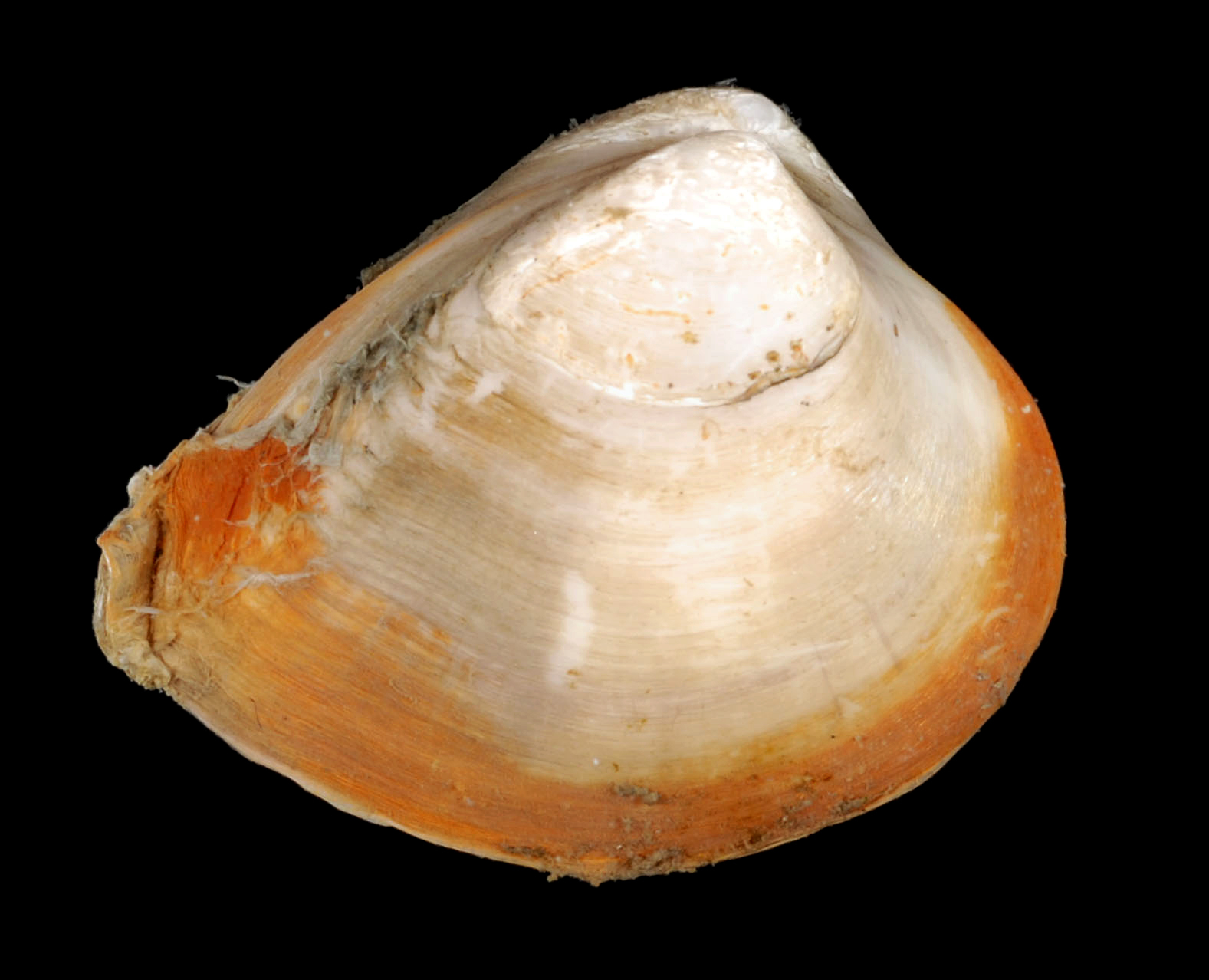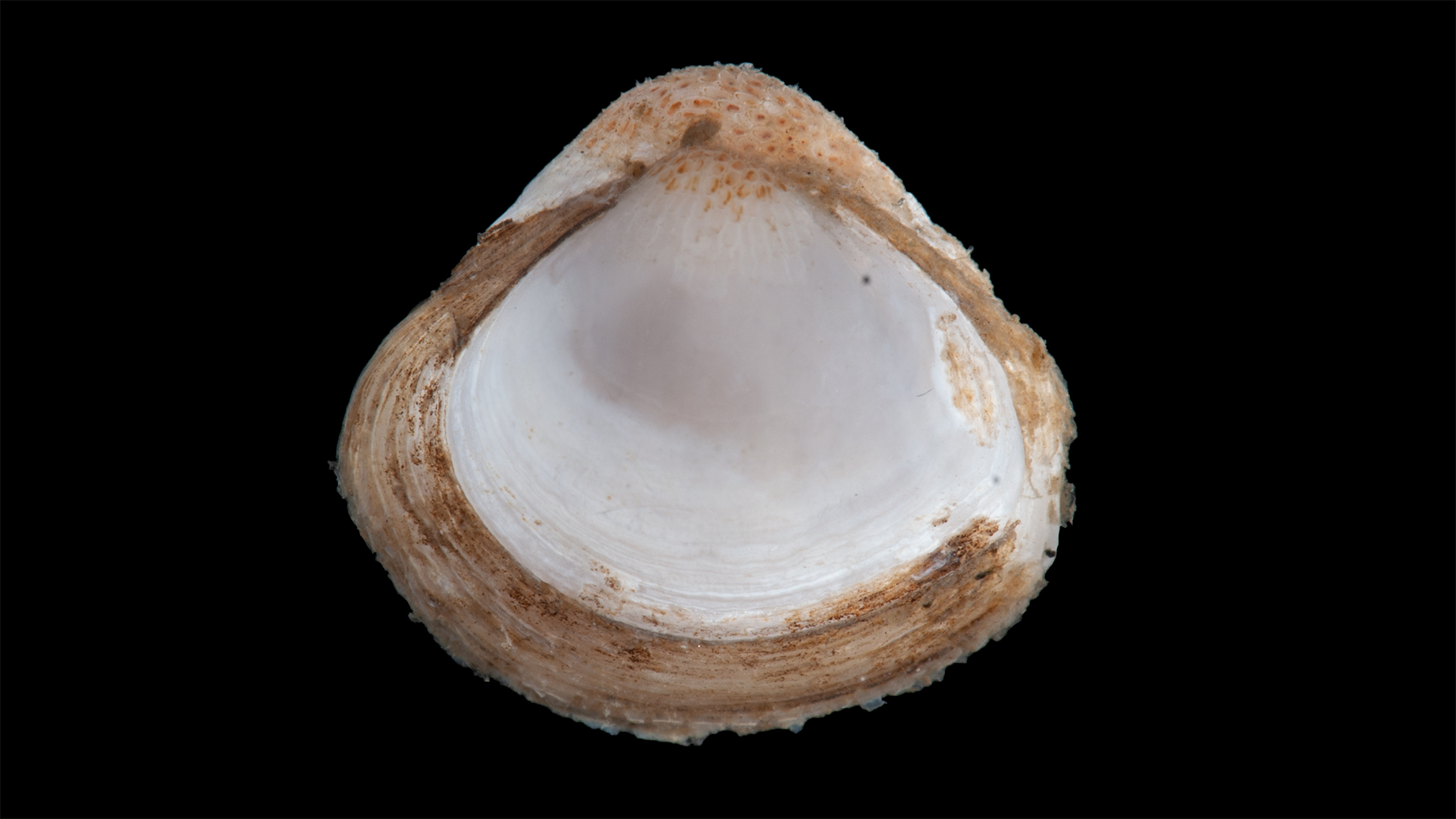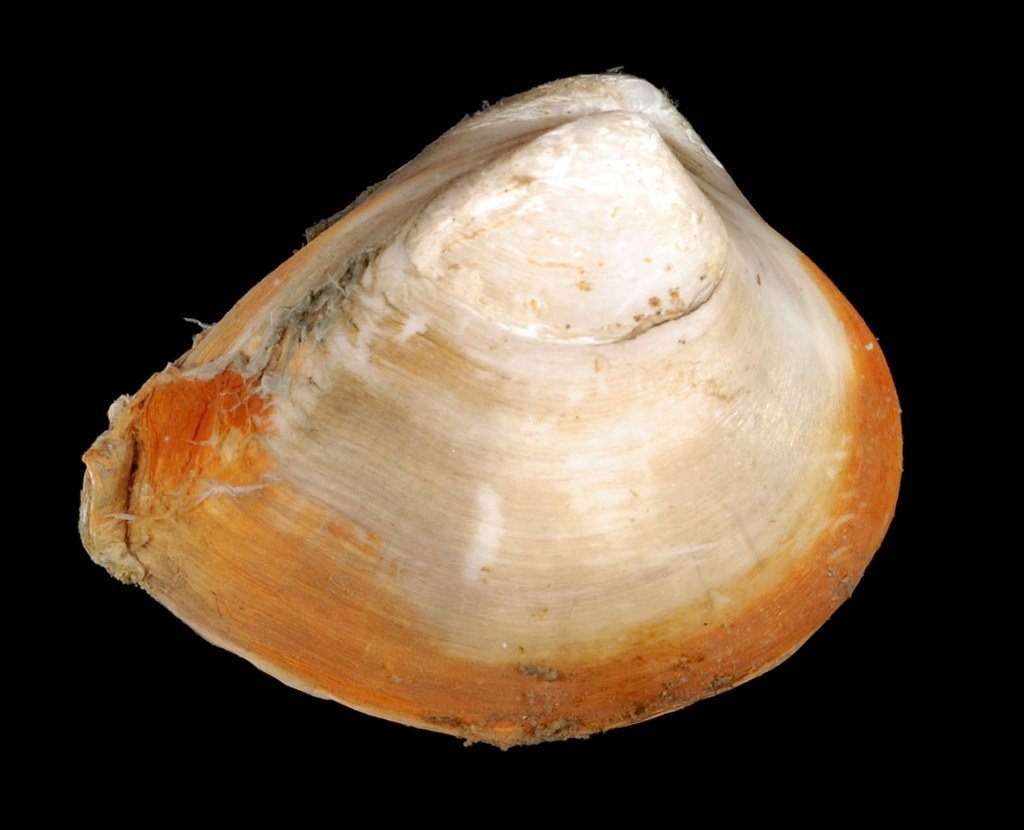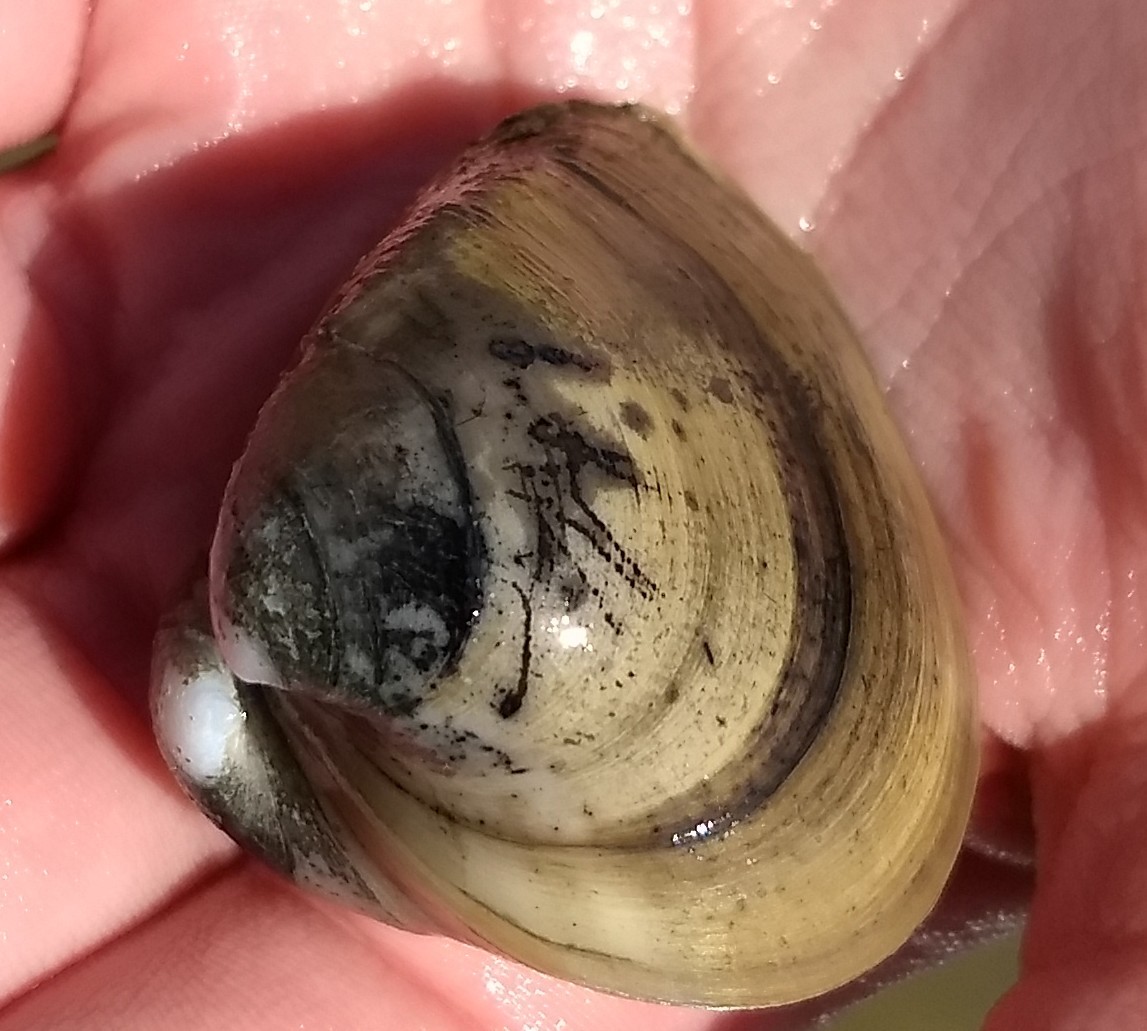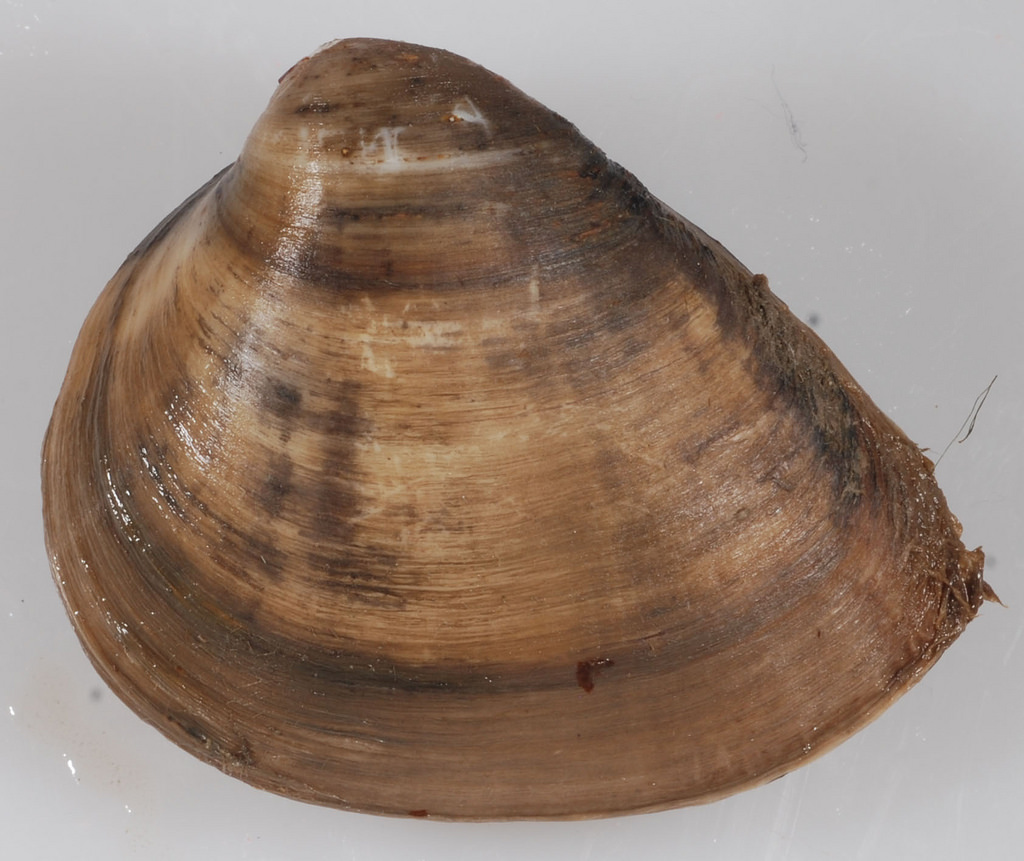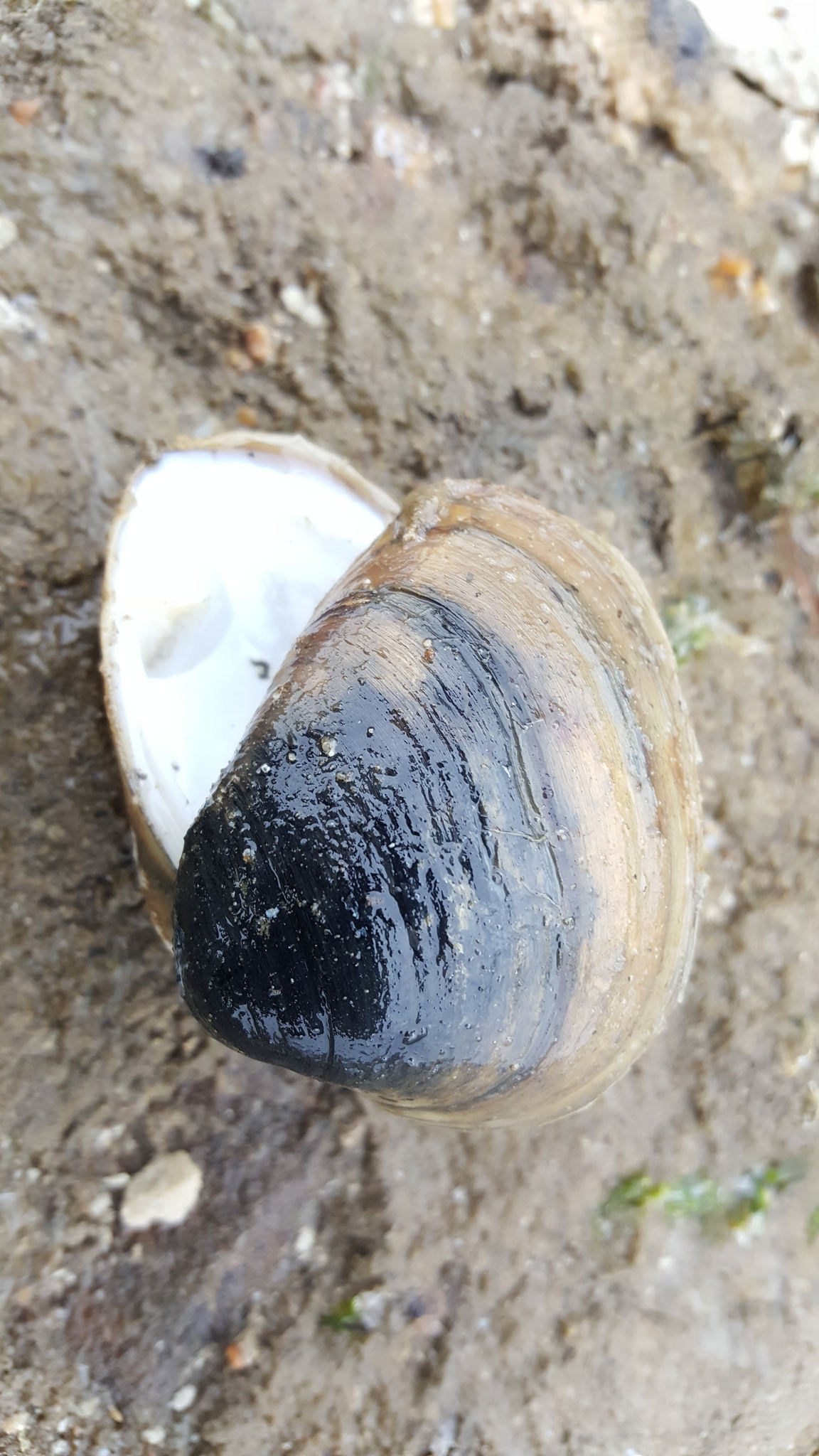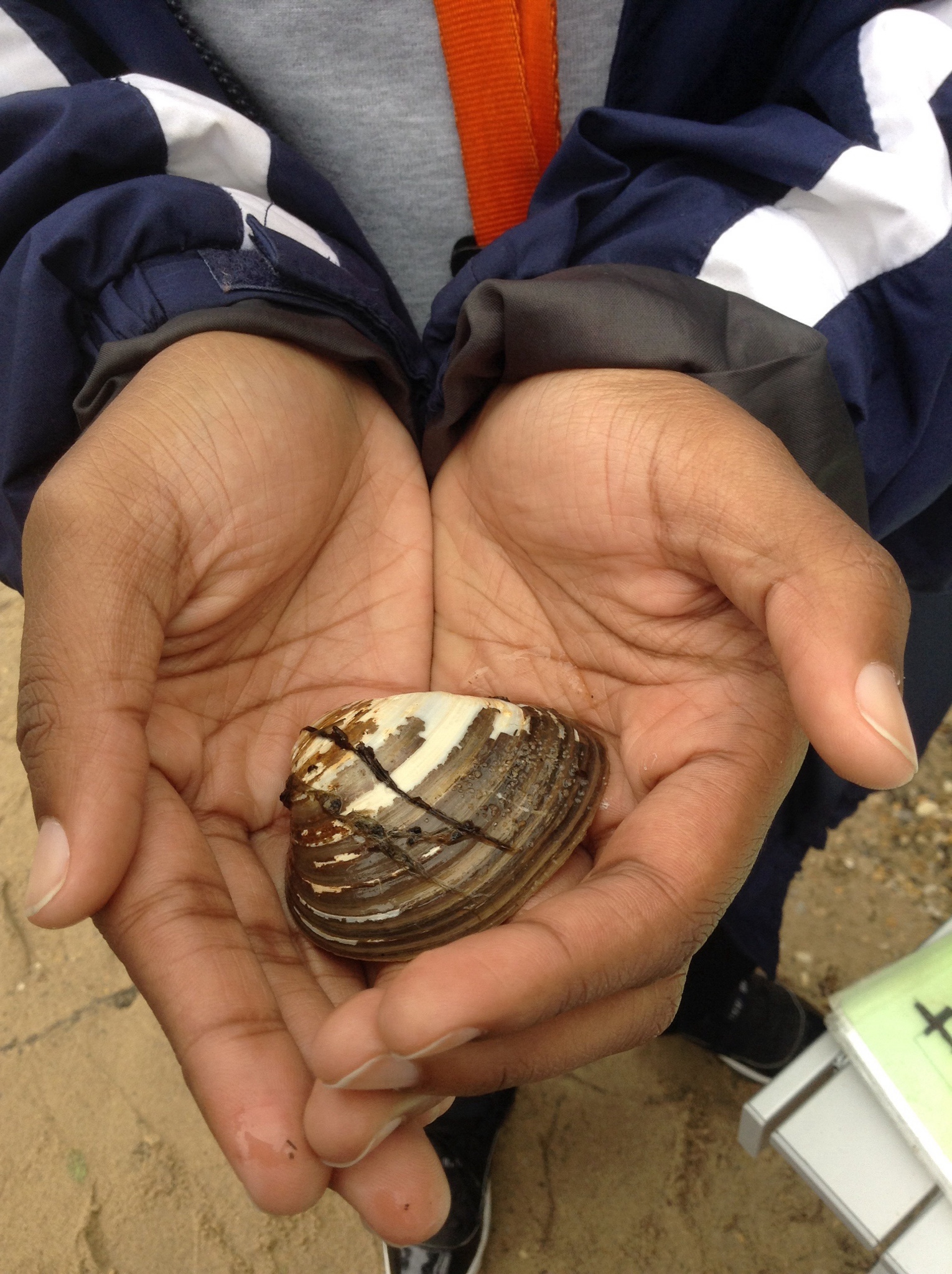

 Synonyms: Common Rangia.
Synonyms: Common Rangia.














The Atlantic Rangia is a bivalve of low salinity turbid mud or sand-based estuaries. It can be found from the Hudson River of New York along the Atlantic seaboard to Florida and along the coastline of the entirety of the US gulf states and Texas south into Mexico. Living specimens of Atlantic Rangia were not verified along the Atlantic seaboard until 1956! J.T. Carlton in his paper, Introduced Marine and Estuarine Mollusks of North America: An End-of-the-20th-Century Perspective, wrote, "Ballast water or the movement of commercial oysters may have transported the clam Rangia cuneata from the Gulf of Mexico to Chesapeake Bay, from where it may have spread down the coast to Florida, and from where it may have been carried in ballast water to the Hudson River."
There is still debate about the nativity of the Atlantic Rangia along the Atlantic Coast. Fossils of Atlantic Rangia have been found in New Jersey, Maryland, and North Carolina and genetic studies have shown that there is a small amount of genetic difference between the gulf coast and coastal Atlantic populations. Many malacologists still consider that the current populations of Atlantic Rangia along the Atlantic seaboard to be of human-assisted introduced stock.
Atlantic Rangia have special cellular capabilities that allow them to survive large salinity fluctuations in their estuarine habitats. According to the US Fish and Wildlife Service, "They can cross the 'horohalinicum', the 5-8 PSU salinity boundary which usually divides fresh and salt-water invertebrates, making them one of the few freshwater clams to become established in brackish water as such thriving in a zone unfavorable for many animals."
Compare Dwarf Surfclam.
There are 104 records in the project database.
| GA | AL | WA | FR | CL | MO | HO | BA | BC | HA | CE | PG | AA | CV | CH | SM | KE | QA | CN | TA | DO | WI | SO | WO |
